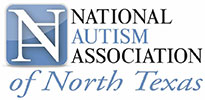When I was first asked to write about providing ABA services during the Covid-19 outbreak, I was elated. This feeling was quickly replaced by a sense of abject panic. What do I know about providing services during a pandemic? Between you and me, we are making this up as we go, just like everyone else.
Yesterday, a client’s parent called me. Would I consider converting his son’s sessions to telehealth as has been done by his Occupational and Speech service providers? Partly because I was distracted by one of my own children and partly because I just don’t have the energy to sugar-coat anything right now, I said something along the lines of “we can try.” You know when your mouth moves faster than your mind and you accidentally say something that totally stuns both yourself and the listener? Well, that happened. I heard myself say, “Now is not the time for great gains. What is most important right now is to place-hold and make sure things remain as close to stasis as possible when the world around us looks like it is falling apart.” He was silent for a moment and then the weirdest thing happened: he agreed, I agreed, and I suddenly felt a whole lot better about writing this bad boy.
Yes, at my company we are still providing 1:1 as needed and appropriate. Yes, we have converted the clients who we feel would benefit from indirect, telehealth services to this model. Is it ideal? No. None of this is ideal, none of it feels groundbreaking or like great behavioral battles are likely to be won. And that—I argue—is the EXACT point.
This is what I want each family to understand most about this time: Regardless of the risks you and your family are willing or unwilling to take, regardless of the particular challenges your child and you are facing as resources begin shuttering and favorite things and places and opportunities become scarcer and scarcer. Now is the time for place-holding so that we can move forward when we have crested the mountain before us; now is a time for maintenance.
Because of the diversity of our clients’ skills and challenges and the lack of a physical locus, we are skating the preposterous and precarious line between providing telehealth and direct services and I will tell you, while sessions look a lot different these days, the goal is fundamentally the same across the different modes of intervention. As we provide critical services to clients, regardless of the skill set, the goals, the behaviors or the motivators, the focus remains to keep everyone as close as possible to the skills as displayed at the last 1:1 session before lockdown and quarantine.
Right now, impacted loved ones are offered a mix of therapeutic interventions: direct telehealth, indirect telehealth, and direct 1:1. Let’s look at the benefits, drawbacks and considerations of different modalities. Hopefully this will serve as a litmus for what will be the most effective modality for your loved one’s skill maintenance during this time.
DIRECT TELEHEALTH SERVICES
This service entails your provider using teleconferencing software to share video and directly interact with an individual.
· PROS– No risk of contamination. Some individuals are intrigued and excited to use this mode of communication with their therapists. Tolerance can be built up slowly by extending the amount of time on the conference. Parents can assist with therapies hands-on and learn more vividly about the nuances of their loved-one’s programs.
· CONS– Not everyone will benefit from intervention via teleconferencing software. Not all individuals are going to be receptive to this mode and some may be downright angry with the change in routine. Many types of programs can be replicated or modified to be meaningful, but some cannot. Maladaptive behavior interventions and protocols are unlikely to be useful.
· CONSIDERATIONS– Consider your loved one’s attention span for media and likely level of flexibility with a favorite screen becoming associated with demands. If your loved one has never attended to a whole movie, he or she will likely not benefit from telehealth services (but you are welcome –and encouraged—to try). Likewise, individuals with severe or pervasive problem behaviors may not benefit from direct telehealth, but indirect telehealth may still be meaningful (see below).
INDIRECT TELEHEALTH SERVICES
This service entails your provider using teleconferencing software to share video and directly interact with you, the guardian.
· PROS– No risk of Contamination. Focus of intervention can be narrowed to very specific programs tailored for parents to implement. Parents learn the programs and the reasoning behind them.
· CONS– 3 words: Parent data collection. This can be difficult and time consuming. Additionally, some individuals are reactive to people taking on new roles in their lives and may resist or react to therapeutic directives given by a guardian.
· CONSIDERATIONS– Discuss the programs that will be the most meaningful and simple for you to imitate or continue through the lockdown. Focus on goals that will create new independent leisure activities, chores/independent living skills, relate to following schedule and especially on programs that act as replacements for problem behaviors. Make sure you stay in regular contact with your provider and give honest feedback about your implementation. We would rather know you are not being 100% consistent so we can modify the program to be easier than to allow you to struggle or avoid necessary interventions. Help us help you.
DIRECT 1:1 SERVICES
This service is a continuation of regular direct therapies with the addition of social-distancing and other hygiene recommendations from the CDC.
· PROS– Maintains the highest level of normalcy for the individual. Most or all programs and able to be addressed (except some community-based instruction types). Effective for problem behavior interventions.
· CONS– Highest risk of contamination. Social Distancing may be difficult or impossible with this modality.
· CONSIDERATIONS– If your loved one has a history of demonstrating severe distress at change in routines, lacks the language skills to demonstrate a basic understanding of the social and medical climate, AND has built a strong rapport with direct service providers, this may be the only reasonable option. If you are wanting to continue direct services, it is important to communicate expectations for safety and hygiene practices with your provider as described by the WHO and CDC.
It is imperative to consider your learner, your family’s needs and your level of risk-aversion against the benefits of each mode of intervention before you decide how to proceed. But please, PLEASE consider continuing services in some way during this time to minimize regression and to maximize the efficacy of future interventions. We cannot know what the future holds, and it is not reasonable to expect great changes in this time of uncertainty, but we can and we must take measures to safeguard the hard-won gains of our loved ones.
Jess Dahl Hatton is a BCBA who specializes in adolescent and adult intervention and has devoted her career to addressing the unique social, behavioral and adaptive needs of this population. She has recently started an ABA company serving the DFW area, the services offered are built to be the “last house on the block” for her clients” ABA needs: behaviorally, financially and demographically, and all her services are residence-based and community based.
Apex Behavior Services LLC. www.apexbehaviorservices.com
Or read more from her on Facebook @jessvasd


